It's too bad that EA Sports doesn't have any competition for the hockey gaming market anymore. While the previous two editions of its long-standing hockey franchise were impressively playable--if not exactly groundbreaking refinements of the superb game that was NHL 11--too little of note has been added this time around. EA Sports is really pushing things this year with a game that incorporates nothing significantly new aside from arcade-style hitting, more fighting, and a lame re-creation of NHL 94.
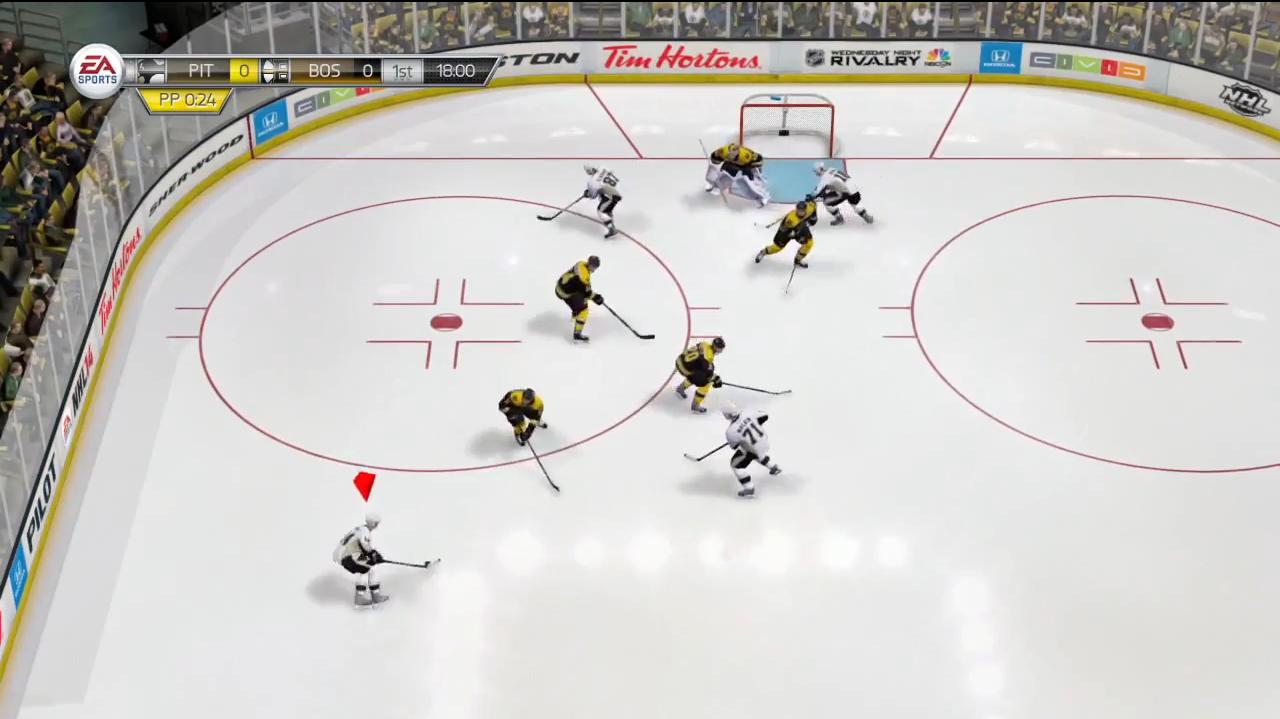
It has now been two decades since NHL 94 changed hockey gaming forever, so EA is marking this with what's ostensibly a souped-up version of the usual release. But just like in Madden 25, there isn't much here worth blowing out the candles over. Game modes are similar to those offered last year. You still play one-off matches, get into careers running a player or a whole franchise, take on GM duties, mess around with Hockey Ultimate Team card-collecting, relive big games from last season in the expanded NHL Moments Live, and take the whole shebang online for multiplayer games, tournaments, and leagues.
Controls are identical to what was offered last year, save for the addition of a one-button deke move and some finicky dangles that are tough to pull off on a regular basis. And like last year, some moves are still overpowered, most notably poke-checking. You can control the nuances of nearly every stride and shot, or drop down to basic button-pushing as was offered in 1994. The game continues to include most of the international hockey world, from Major Junior in Canada and the elite European leagues to the NHL and its minor-pro AHL affiliate clubs. Team rosters are a little messed up, though, apparently dating back to June, and even the first downloadable update includes some noticeable mistakes and omissions, like the absence of the new division names that were announced in July.
Graphics and sound have been ported over almost intact from last year's game. Visuals remain very good, with impressive animations and TV-accurate depictions of players. The broadcast duo of Gary Thorne and Bill Clement spouts the same lines as before, the sound effects are ultrafamiliar, and the soundtrack includes the standard alt-rock lineup of new and old tunes where the most prominent track is Wolfmother's "Joker and the Thief" from its 2005 debut disc.
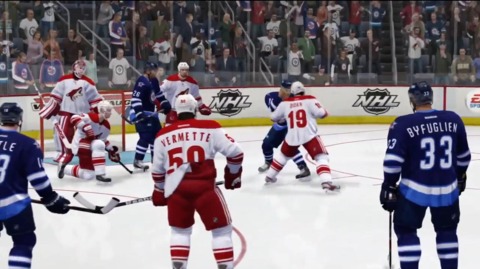
Additions are present, though they don't amount to much. The big new feature change is that the Be a Pro franchise mode, where you play an up-and-coming phenom or an existing star, has been converted to a slightly more elaborate role-playing experience called Live the Life. It never rises above being more than a half-baked version of what 2K Sports has been doing with its NBA 2K series, where you gain endorsements, design shoes, and even mess around with the media to make a name for yourself. Live the Life functions similarly, but there's no meat on this bone. Interactions are handled through bland text screens. You choose from several possible answers when teams quiz you before the draft, for instance, or simply say yea or nay when sponsors come calling with deals like putting your toothless mug on billboards in exchange for cash.
The results of how you mouth off to your team or the press directly translate to scores given to four audiences--fans, teammates, management, and family--that govern how things work off the ice. Be too much of a prima donna, and your team and management hate you, and might just trade you out of town. It's all too boring and rigid to feel authentic. Scores go up and down immediately after you finish answering questions, making the whole thing seem like you're painting a good guy like John Tavares or a nut like Steve Downie by the numbers, rather than creating a real hockey player.
The other headline new feature is NHL 94 mode. This is a retro option where you play arcade hockey just like you did in the Clinton era. It's a great idea, although it doesn't include many actual retro touches. The mode acts more like a dumbed-down NHL 14 sped up and locked to an old-school top-down camera. You get the distinctive blue-tinted ice, stars under players, 16-bit sound effects, and the zippy action that made NHL 94 so great back in the day. But the game uses the new graphics engine, mostly modern sound effects, and the current rosters.
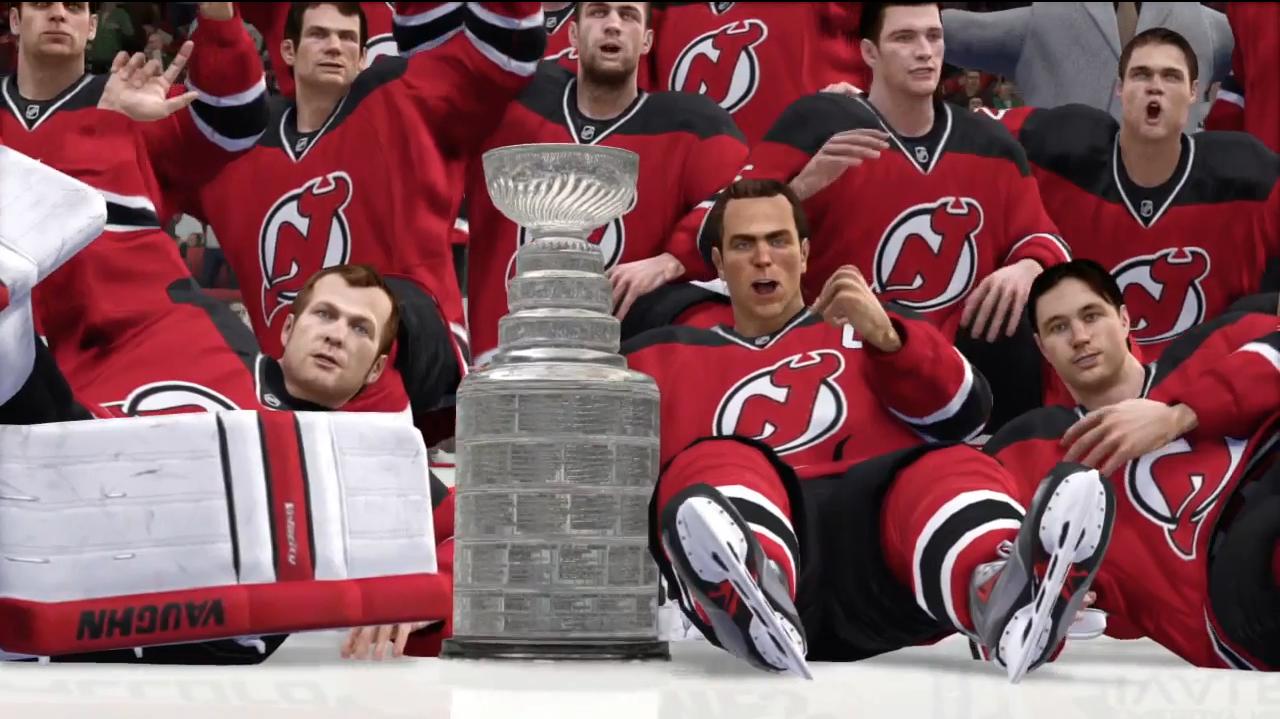
Other modern touches that could have been more meaningful, like online multiplayer and league play, aren't supported in this mode. Ultimately, it's as if EA Sports couldn't decide between going full retro with the complete 1994 game or doing a modernized take on a classic, so it compromised and did neither. The result is barely a passing nod to this legendary hockey game, with the most standout detail being the bleepy-bloopy music you might remember well from long-ago marathons on the Sega Genesis.
Gameplay changes are also very slight in NHL 14. This is the second year of EA Sports' newest physics engine, but the action on the ice isn't noticeably smoother this time out. Granted, the skating physics are still very good. Momentum continues to be extremely well handled, especially when it comes to sharp turns and stops. Opposing defensemen get really aggressive in front of the net, and it's routine to see the net knocked off its moorings when forwards drive hard into the crease.
Collision detection has been altered to make matches more hit-happy. Now you can lay out opponents just by skating into them with momentum, and you can set guys up in the trolley tracks by hitting them. This adds more of an arcade feel on the ice, with players getting launched into the boards or sent sprawling during virtually every shift. Hitting has been amped up beyond what happens in the authentic NHL, but not to the point where you can turn a player into a Ping-Pong ball that bounces around hammering all comers. You also still have to line up players before you can hit them. Going for the big hit often leaves you out of position and out of the play.
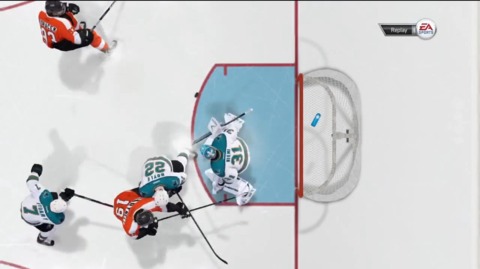
One weird aspect of the emphasis on hitting is how hits coexist with penalties. There's feast-or-famine mentality, where you either get nailed a lot or get away with murder. Players on the receiving end of your hits turn into the boards a lot, resulting in instant penalties for boarding or hitting from behind. This applies a significant potential cost to acting like a tough guy and stepping up to make bone-crushing hits, which is fair and lifelike, all in all. But this somewhat tight interpretation of the rules goes right out the window when it comes to how much time you're given to level a puck carrier. You can demolish an opposing player a good few seconds after he's gotten rid of the puck and receive no penalty for the late hit. That's not so fair and lifelike, even while it can be satisfying when you're dishing out the hit, not taking it.
Along the same rough-and-tumble lines, fighting has been changed dramatically. Scraps now take place as part of the action. Fights aren't given the big production that they've been given in recent years, where the camera switches to a dramatic first-person view whenever players drop the gloves. Now, brawls take place as part of the play and are fought while looking through the usual third-person in-game camera. Where fights were rarer and more sideshow-like last year, now they happen on a regular basis.
There are markedly different types of fights, too. Most evolve right out of the action, with players going at it after a big hit, or one tough guy rushing in to settle a score after a teammate just got leveled. But there are also staged fights, where two tough guys square off out of the blue to rev up their teams. Fighting itself remains the same no matter what the type. You employ basic button presses to pull jerseys, grapple, dodge, and punch.
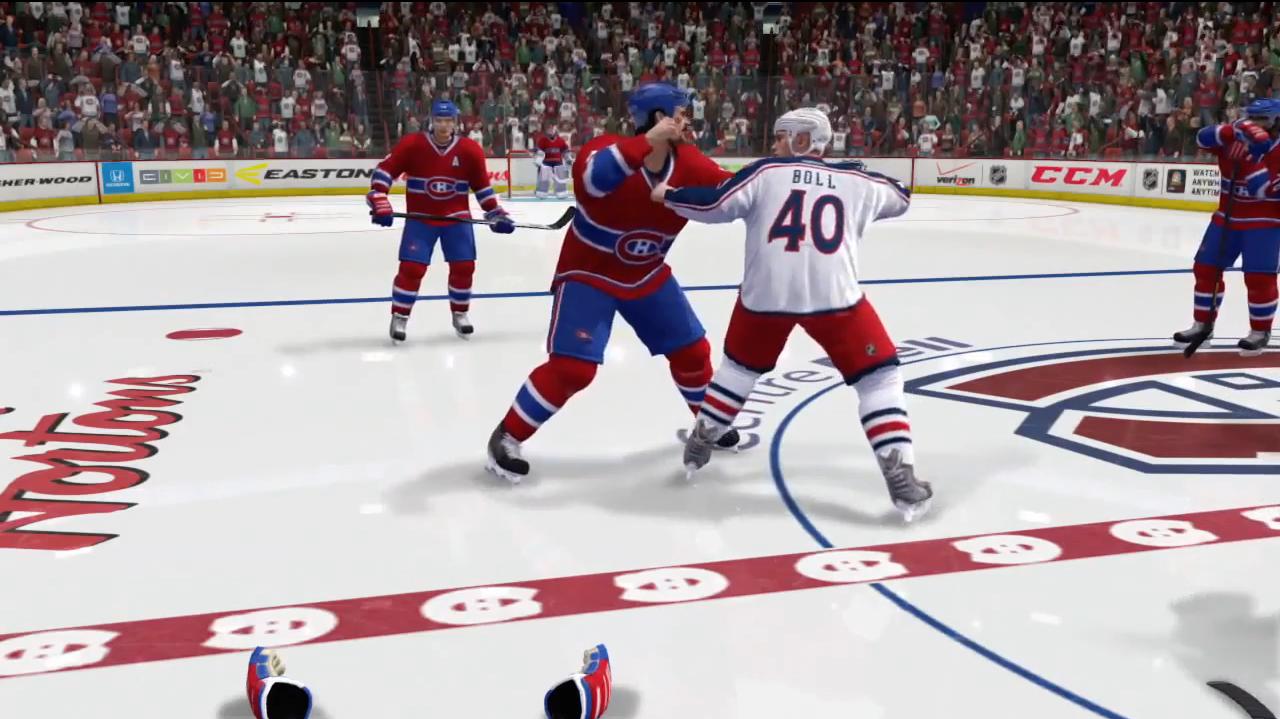
Even though it's good to see more brawls in NHL 14, especially the reaction ones where someone defends a teammate, the balance is too revved up. Fights are too common on the default settings now, and many are of questionable benefit. Most fights result in both teams earning energy for their lines, regardless of who wins. They often amount to little more than button-mashing for a minute or so, which can make for tedious interludes in the real action. This slows the game down, albeit with the compensation of adding meanness to the game present in real hockey. So you love the new fighting when it adds nastiness to close games between rivals like the Leafs and Sens; you hate it when it drags out blowouts between virtual strangers like the Leafs and Blue Jackets.
Despite the alterations, the general feel is similar to that of NHL 13. The action is insanely fast out of the box. Forwards fly, and pinball passes are common. You need to dial back a lot of the speed settings to get a more realistic game, but it can be done. Artificial intelligence hasn't been improved, and if anything, the game may be stupider. Dumb teammates are a problem when playing games with your pro in Live the Life or when you play games with the controller locked to one position. Your comrades often pause at the blue line, refuse to pass the puck even when you're wide open, and fail to head-man the puck properly. Playing at one position makes this much more of a stop-go game than real hockey, with little of the flow that makes the pro game so great to watch. As a result, you need to stop in full flight a lot of the time to avoid going offside, and hog the puck until a teammate gets into position for a pass.
The flow isn't nearly so bad when playing normally and switching from player to player. More offensive initiative is displayed by your teammates, and you see speedy forwards like Phil Kessel and Alex Ovechkin trying to get well behind the defense and setting themselves up to receive long stretch passes. Enemy defense is still sharp and smothering, giving you a serious challenge when playing on All-Star and above.
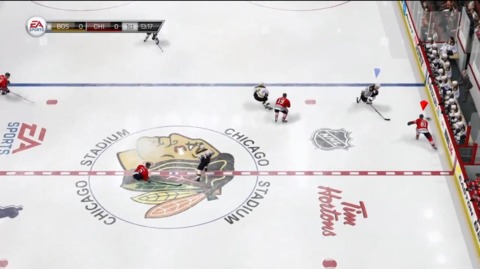
As in last year's game, opposing players pounce on loose pucks with unnatural speed. They also forecheck relentlessly and with speed that just isn't possible in the real world. Enemy goalies get their usual boosts at higher difficulty levels, as well. You can often pepper the opposition with point-blank shots from prime scoring positions and come away empty as the enemy keeper goes from post to post faster than you can snap the puck into the top shelf. This remains aggravating, particularly because the enemy goalie always tends to pull off these acrobatics just before your own netminder lets one through his five-hole from 60 feet.
NHL 14 is not a bad game; it's just a very familiar one. The core game remains quite good; the tweaked hitting physics and new fighting model can provide some spice, and the sheer number of solo and online options give you plenty to do. But the new features brought to the table don't add enough over what was available in NHL 13, making this a dubious buy for anyone who still has last year's game and can live without the crushing new hits and more widespread fisticuffs.